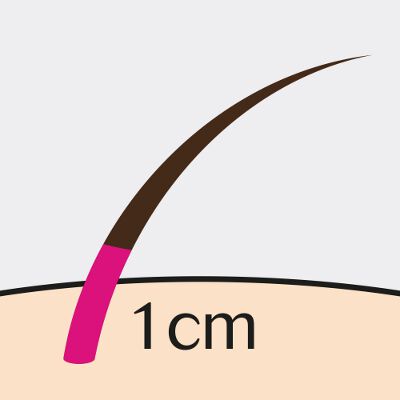A hair strand test for drugs and alcohol is highly accurate – and is almost impossible to cheat.
The method can be used to detect virtually all drug and alcohol substances, between seven days and six months after their use. Test results also indicate the month in which someone took a substance, and so can be used to build a ‘picture’ of substance use over time.
A small amount of hair is taken by a trained sample collector – usually from the head (we only need about a shoelace worth, less than many laboratories).
Fixing’ a hair test is exceptionally difficult. Dyeing or bleaching hair – or using any other chemical treatments – may damage the outer sheath of an individual’s hair, leading to drugs leaching from the hair. The sensitivity of equipment used means that we are usually able to detect the remaining metabolites, and our scientists will take the condition of the hair into account to accurately report findings.
Should an individual’s hair be completely unsitable for testing, we can still use body hair or fingernails – for an accurate result.
Today, Cansford Laboratories offers 90% of hair test results within 48 hours of receipt – the fastest hair testing service in the UK.
What you need to know about hair testing:
Detection window:
- For alcohol, 7 days–6 months
- For drugs, 7 days–indefinite (dependant on hair length)
Collection method:
A hair sample of around 5-millimetre thickness is taken from the head or body of the donor, and deposited in a sealed, tamper-proof envelope. This is sent to the laboratory for testing.
Advantages:
- Exceptionally difficult to cheat
- Indicates patterns of drug or alcohol use over weeks and months
- Highly sensitive; highly accurate
- Simple, non-invasive collection
- Fast results turnaround, when performed by Cansford Laboratories.
Disadvantages:
- Hair tests cannot precisely determine the quantity of substances used by the donor
- Samples cannot indicate substance use less than 7 days after the incident.
For a full list of substances tested for, please click here

How does hair testing work?
When ingested, drugs and alcohol produce specific chemical markers in the body called metabolites. These markers pass into hair, which subsequently acts as a record of an individual’s drug or alcohol use. The presence of the metabolites helps to prove that the compound was ingested by the donor, and not simply the result of external contamination – for example, another person using drugs in the donor’s presence.
Hair typically grows at about one centimetre per month. When tested, each centimetre of hair therefore reflects one month’s history of drug use (or non-use). This is why hair strand testing is able to provide such a large window of detection, assessing drug use as far back as 6 months.


Essentially, the time frame of detection required dictates the amount of hair required for the sample. If a court orders a hair test to assess drug use in the past 4 months, then 4 cm of hair will be analysed.
Hair takes around 7 days to grow out of the scalp – which is the minimum time window a hair test can detect. It may therefore be necessary to use hair testing in conjunction with blood and (oral fluid) saliva testing.


